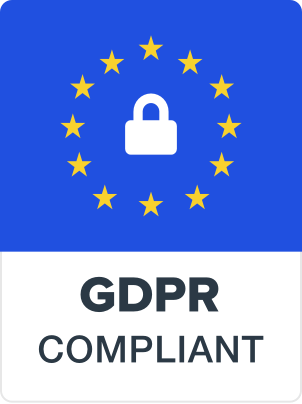How does UrAudits benefit the oil and gas sector in inspection and auditing?

November 3 , 2023
Safety, compliance, and efficiency are primary in the oil and gas industry. Auditing and inspection in the oil and gas sectors are incredibly intricate due to the machinery available, their maintenance, and strict compliance to follow. It cannot be performed traditionally as it can be too lengthy, and the chance of errors is high.
With UrAudits, you can have a brand-new digital solution in the “app” form. This is designed to address the unique difficulties of this sector regarding inspection and auditing via just fingers anywhere. Our oil and gas audit app is your trusted collaborator in streamlining operations, promoting safety, and safeguarding compliance, all while saving valuable time and resources.
In this web blog, we’ll explore:
- What is oil and gas inspection?
- What regions require inspection in the oil and gas industry?
- Why audit app can greatly oversee these inspection areas?
- Why is UrAudits the great pick out for oil and gas sector inspection?
Before we move forward, you can visit our website to see how our auditing app for Play store and App store is the way to streamline your oil and gas facilities inspection. Know every feature about our auditng app for App store & play store and get satisfaction and Download it.
Let’s start!
What is oil and gas inspection?

Oil and gas inspection examines, evaluates, and verifies numerous components, facilities, and processes of oil and gas exploration, production, transportation, and refining.
It is meant to guarantee the safety of operations and conformity to established sector standards and regulations. It also seeks to decrease the chances of accidents and environmental destruction and uplift efficiency. Here are certain crucial aspects of oil and gas inspection:
Compliance: The oil and gas sector is highly regulated. Companies utilize inspections to guarantee that their goods comply with numerous norms and acts at local, national, and international levels. These integrate provisions of wellness and safety norms, environmental security policies, and rules of good manufacturing practices. Among them are API and OSHA.
Quality Control: Quality control inspections are created during equipment and facility manufacturing and construction to guarantee they meet sector standards and specification demands. It guarantees the product’s safety and superiority are maintained.
Safety: The oil and gas facilities are characterized by several high-pressure systems, hazardous materials, others, and volatile environments. The inspection helps to find and remove safety risks, avert accidents, and safeguard the lives of workers and the adjacent population.
Environmental Protection: Inspection actions are done to evade oil spills, gas leakage, and land and water contamination. This entails surveillance and servicing of containment structures.
Personnel Safety: Workers’ health, safety procedures, and equipment are often checked to evade accidents and keep the staff safe. This entails wearing PPE and complying with safety rules.
Data Collection and Reporting: Inspection entails the taking of photos as well as documents and the preparation of finished reports that cover the findings. These reports are major for preserving records, verification of compliance and decision-making.
Preventive Maintenance: Preventive maintenance programs typically integrate oil and gas inspections. That way, these companies can recognize and resolve possible obstacles before they grow into vital downtimes or repairs.
Oil and gas inspection is an elaborate process that forms the heart of sector operations’ safety, integrity, efficiency, conformity to sector regulations, and ethical obligations towards the environment.
What regions require inspection in the oil and gas industry?

Oil and gas inspection is primary in preserving facilities, equipment, and processes’ safety, reliability, and conformity. This is a sector that necessitates inspection of specific regions and components. Some of the crucial regions and items that require inspection include:
- Welds: Welding joints are checked for quality, integrity, and compliance.
- Pressure Equipment: It entails the checkup of pressure vessels, boilers, heat exchangers, and pipelines that keep the capacity to withstand very tall pressures and temperatures.
- Corrosion: Corrosion happens more often in oil and gas environments and with corrosive materials. These integrate ultrasonic testing, radiography, and visual inspections for detecting and monitoring corrosion.
- Valves and Actuators: These are examined to check for proper working, leaks, and signs of wear.
- Storage Tanks: Inspecting above and underground tanks for any leakages’ existence and checking their conditions is central to evading environmental damage.
- Pipelines: Pipeline inspection is primarily to check whether there would be any leaks, dents, and damages that may result in environmental pollution, oil spills, and accidents. For such purposes, tools like pigging and ILI tools are typically used.
- Cathodic Protection Systems: Such systems are employed as anti-corrosions for underground pipelines and structures. These need to be periodically checked to confirm they are operational.
- Electrical Systems: Such a system of inspection in the electrical systems assists in guaranteeing safety operations and complying with electrical codes to prevent accidents and fires.
- Safety Systems: Inspection should also be done for safety equipment like fire detection and suppression systems, emergency shutdown systems, and gas detection systems for use in emergencies.
- Instrumentation and Control Systems: Ensuring that processes are correctly measured or controlled by instruments and systems inspection is vital.
- Rotating Equipment: This includes pumps, compressors, and turbines, which are inspected for wear, alignment, and vibration to prevent breakdowns and guarantee efficient operation.
- Structural Integrity: Offshore platforms, drilling rigs, and other structures must be inspected for structural integrity to prevent accidents and preserve the safety of personnel.
- Non-Destructive Testing (NDT): Various NDT techniques, like ultrasonic testing, radiography, magnetic particle testing, and dye penetrant testing, are used for inspecting the integrity of components without resulting in damage.
Regular inspections, maintenance, and testing are primary in the oil and gas sector to prevent accidents, protect the environment, and guarantee the efficient and secure operation of facilities and equipment. These inspections are often guided by sector standards and regulations to preserve safety and compliance.
Why oil and gas audit app can be great to oversee these inspection areas?

Oil and gas audit apps can be highly efficient in managing inspections in the oil and gas sector for a variety of reasons:
Efficiency and Speed: Oil and gas audit apps streamline the inspection process. You can have a quicker and more efficient inception. Inspectors can digitally capture data, photos, and notes, decreasing paperwork and data entry time. This outcome resulted in quicker inspections and quicker report generation.
Consistency: Oil and gas audit apps can be configured. They can adhere to specific checklists and standards consistently. So now guarantee that all major regions are inspected and no steps are missed.
Photo and Video Integration: Oil and gas audit apps permit the attachment of photos and videos to inspection reports. This visual documentation is valuable context and evidence, specifically for obstacles that require instantaneous attention.
Accuracy: Errors happen during manual data entry. Digital data gathering minimizes the danger of errors. You can rapidly deal with safety-critical data.
Data Analytics: Many oil and gas audit apps offer data analytics capabilities. You can analyze trends, recognize recurring issues, and make data-driven decisions. Now, raise operations and maintenance.
Real-Time Data: Oil and gas audit apps permit real-time data gathering and reporting. This way, you can oversee timely data crucial for safety and compliance. Issues can be identified and addressed immediately.
Remote Collaboration: Oil and gas audit apps can facilitate cooperation between teams. Experts and decision-makers can review and comment on inspection reports in real-time, even if they are not physically exhibiting at the inspection site.
Offline Capability: In remote or offshore locations with limited internet connectivity, certain oil and gas audit apps like UrAudits offer offline functionality. Let your Inspectors perform inspections and then sync the data when they regain internet access.
Cost Savings: There is an initial expense linked with executing inspection apps. But can lead to expense savings above time. How? No or decreased paperwork, enhanced efficiency, and no costly errors or incidents.
Customization: Audit apps can be customized to fit the specific wants and standards of the oil and gas industry. Manage and address all crucial inspection regions and requirements.
Document Management: It arrives with features for document storage. Now, quickly enter historical inspection reports, compliance documents, and other records.
Scalability: Our audit app can scale to accommodate the wants of either small or big organizations. Making them right for a broad range of companies within the Industry.
Notification and Alerts: With audit app configuration, receive notifications automatically and alerts for crucial issues. Ensure that major actions are taken promptly.
Compliance and Reporting: Ensure compliance with sector regulations and standards with the audit app. UrAudits arrives with detailed reporting features that help organizations exhibit conformity to these requirements.
Why is UrAudits the great pick out for oil and gas sector inspection?
UrAudits is the perfect pick out for oil and gas sector inspections. It emphasizes safety, enforces compliance, and improves performance. It has efficient mobile inspections, real-time reporting, and simple issue tracking with a focus on safety and a cost-effective, no-subscription model. Just save your time and streamline operations, decreasing downtime and promoting growth. Our Customizable checklists are:
- Gas Storage Safety Compliance Checklist
- Health and Safety Audit Form
- Well Drilling Report Checklist
- Regular Station Inspection Checklist
- Tubular Inspection Checklist
- Heating Oil Tank Inspection Checklist
So get started and receive our in-depth analytics of audit app for Anroid and inspection app for iOS now.
UrAudits audit checklist app is available on the Play Store, App Store, and Web App. Download now.
Also Read: Streamlining Oil and Gas Inspections: Introducing the Revolutionary Inspection App
Copyright © 2024 Uraudits.com. All Rights Reserved. Privacy Policy | Legal | Terms of Use
Privacy Overview
| Cookie | Duration | Description |
|---|---|---|
| cookielawinfo-checbox-analytics | 11 months | This cookie is set by GDPR Cookie Consent plugin. The cookie is used to store the user consent for the cookies in the category "Analytics". |
| cookielawinfo-checbox-functional | 11 months | The cookie is set by GDPR cookie consent to record the user consent for the cookies in the category "Functional". |
| cookielawinfo-checbox-others | 11 months | This cookie is set by GDPR Cookie Consent plugin. The cookie is used to store the user consent for the cookies in the category "Other. |
| cookielawinfo-checkbox-necessary | 11 months | This cookie is set by GDPR Cookie Consent plugin. The cookies is used to store the user consent for the cookies in the category "Necessary". |
| cookielawinfo-checkbox-performance | 11 months | This cookie is set by GDPR Cookie Consent plugin. The cookie is used to store the user consent for the cookies in the category "Performance". |
| viewed_cookie_policy | 11 months | The cookie is set by the GDPR Cookie Consent plugin and is used to store whether or not user has consented to the use of cookies. It does not store any personal data. |









